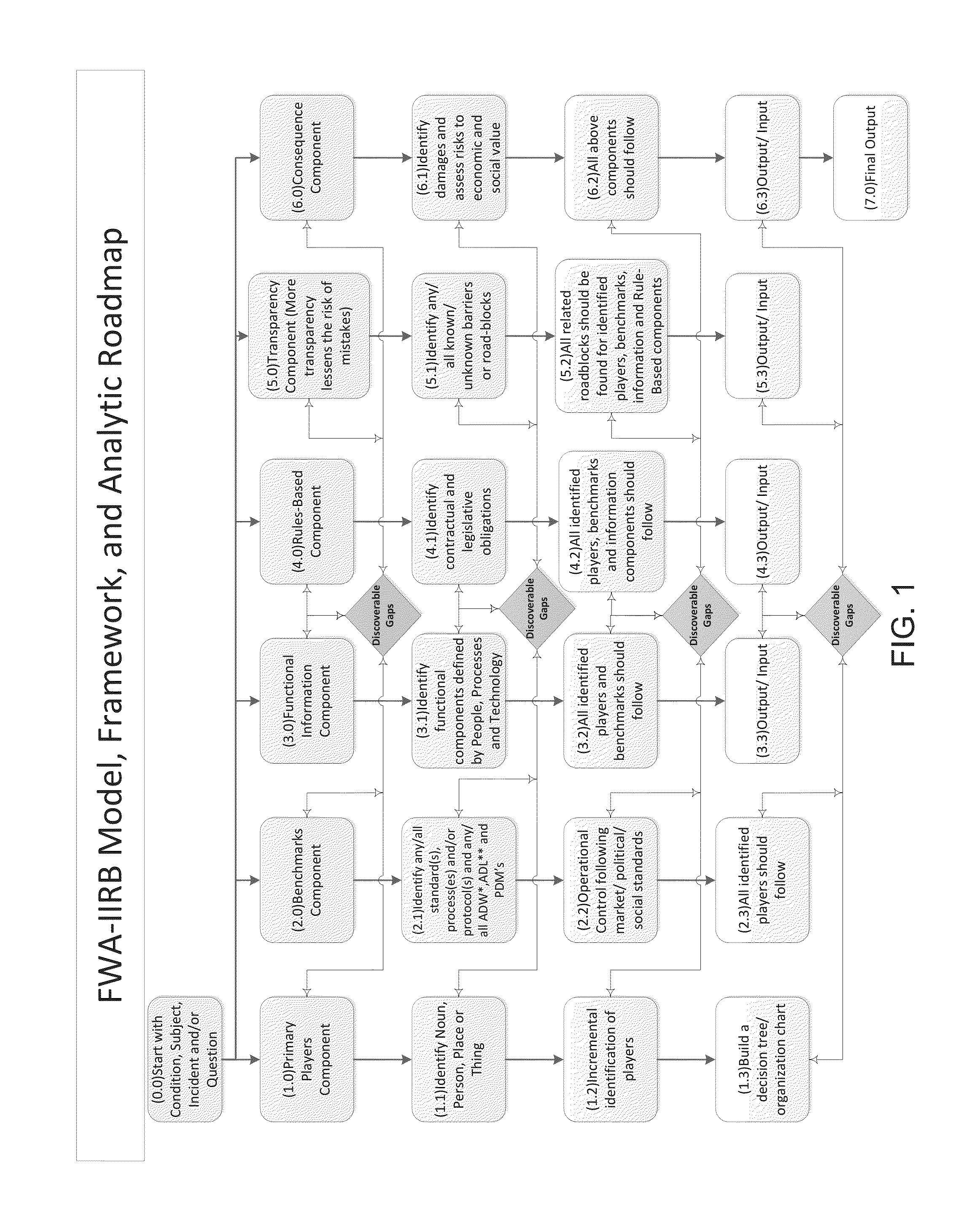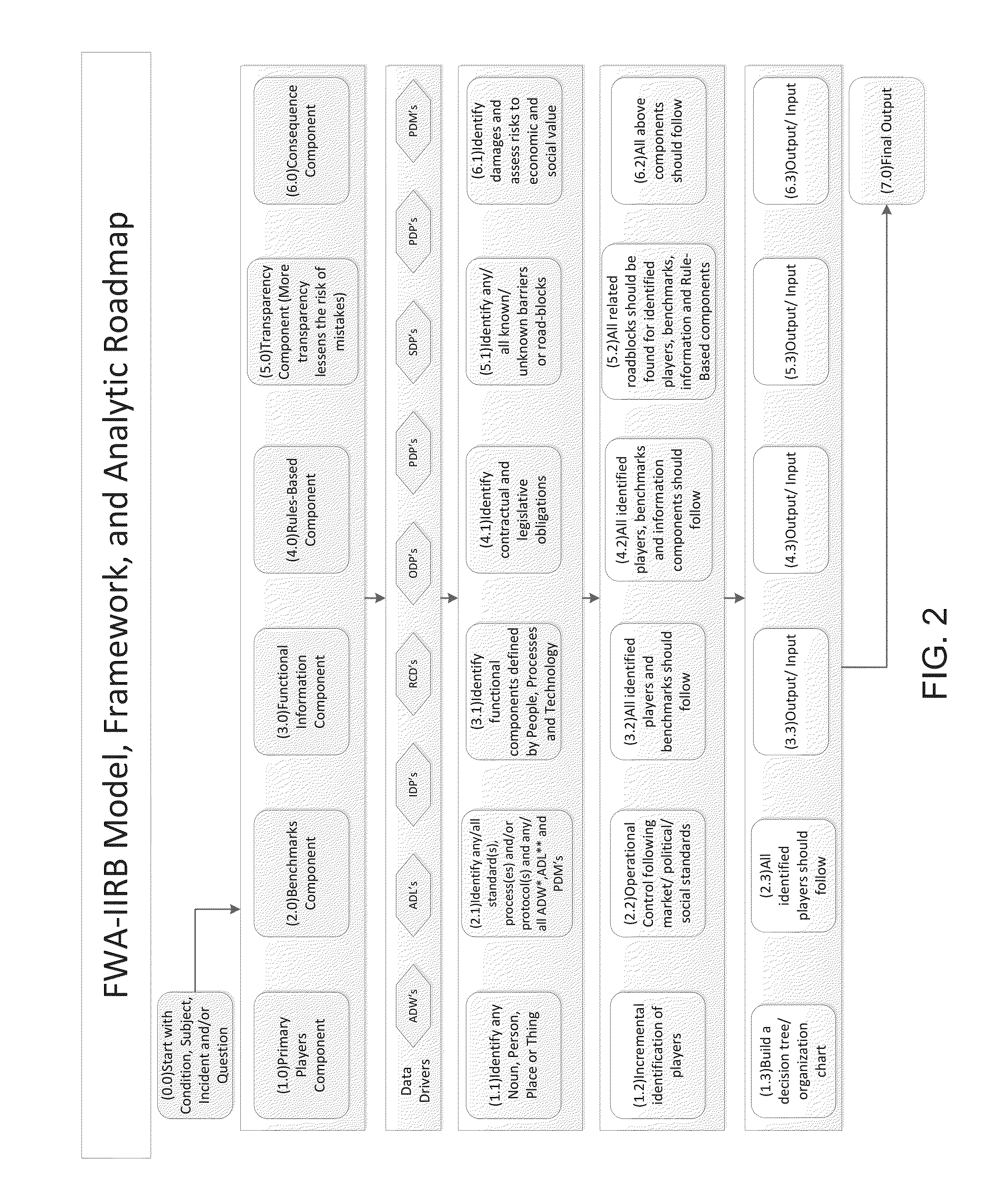Interactive and Iterative Behavioral Model, System, and Method for Detecting Fraud, Waste, and Abuse
a behavioral model and iterative behavior technology, applied in the field of fraud, waste and abuse, can solve the problems of compromising the ability to expose deceptive measures, affecting the ability to pinpoint subterfuge, and affecting the detection effect of fraud and was
- Summary
- Abstract
- Description
- Claims
- Application Information
AI Technical Summary
Benefits of technology
Problems solved by technology
Method used
Image
Examples
example
Identity Theft—Sample Components from One Issue in a Case
[0032]In the following simplified example, the actions described as being performed by a “computer system” are at least in part performed by a computer processor executing instructions stored on a computer readable storage medium. The example relates to a fraud victim, a female spouse in the process of getting divorced, who attempts to open up a checking account to deposit cash. The bank refused to open an account. The victim runs a credit report with a reported score of 358:
[0033]FWA-IIRB Model, Framework, and Analytic Roadmap[0034]Computer system provides and user validates the selection and / or creates relevant industry revenue cycle component(s) (see FIG. 5)[0035]Computer system provides and user validates Mortgage Banking Revenue Cycle[0036]Computer system provides and the user validates current and updated components of revenue cycle-system compares to data base and or new data inputs and progresses in the accumulation of...
PUM
 Login to View More
Login to View More Abstract
Description
Claims
Application Information
 Login to View More
Login to View More - R&D
- Intellectual Property
- Life Sciences
- Materials
- Tech Scout
- Unparalleled Data Quality
- Higher Quality Content
- 60% Fewer Hallucinations
Browse by: Latest US Patents, China's latest patents, Technical Efficacy Thesaurus, Application Domain, Technology Topic, Popular Technical Reports.
© 2025 PatSnap. All rights reserved.Legal|Privacy policy|Modern Slavery Act Transparency Statement|Sitemap|About US| Contact US: help@patsnap.com



